Dominated by the Christianity for more than 1,500 years, art in the West continues to be seeded with its signs and symbols. They exert a magnetic pull over imagery that may or may not have been created to declare them.
Lauren Grossman’s use is intentional, if not reverential. (Below, Clear Christ and Behold, via Howard House)
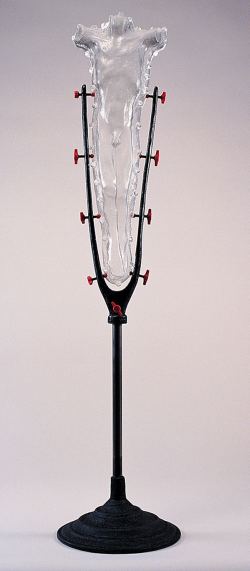
 From his literal youth, Michael Lucero from 1978, via Howard House:
From his literal youth, Michael Lucero from 1978, via Howard House:
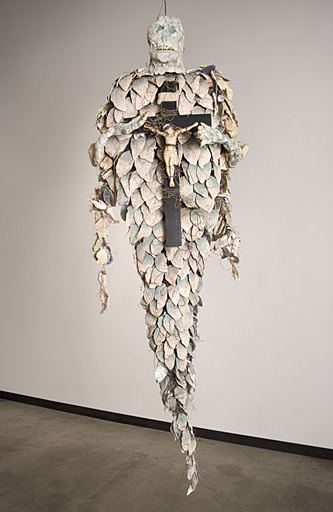 Folkert De Jong‘s could be accidental, but it’s real in any case, a crucified figure who has become his cross.
Folkert De Jong‘s could be accidental, but it’s real in any case, a crucified figure who has become his cross.
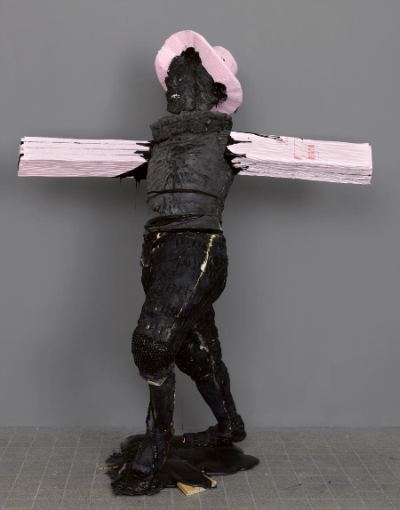 Extended arms can be enough. (Damien Hirst)
Extended arms can be enough. (Damien Hirst)
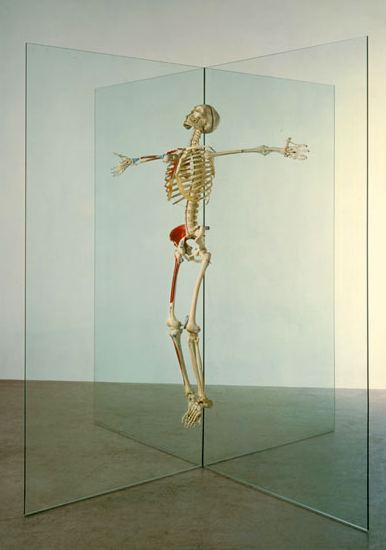 A body made of Duct Tape slumping as if dead is a descent from the Cross. (Dan Webb, Mr. Fixit )
A body made of Duct Tape slumping as if dead is a descent from the Cross. (Dan Webb, Mr. Fixit )
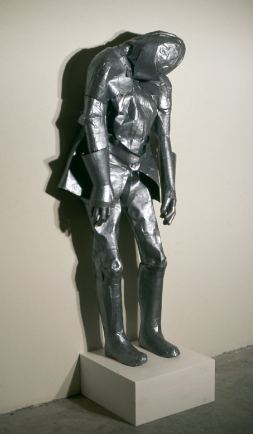 Speaking of a descent from the Cross: (Tom Otterness, Untitled)
Speaking of a descent from the Cross: (Tom Otterness, Untitled)
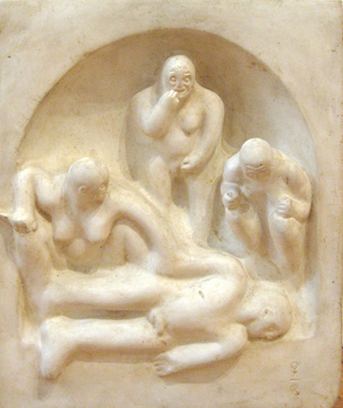 Another descent. (Mark Kang O’Higgins)
Another descent. (Mark Kang O’Higgins)
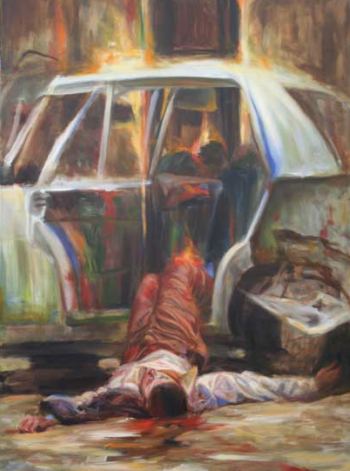 Even a configuration of a (less than) heavenly host rings the old bell. (John Feodorov – Office Deity)
Even a configuration of a (less than) heavenly host rings the old bell. (John Feodorov – Office Deity)
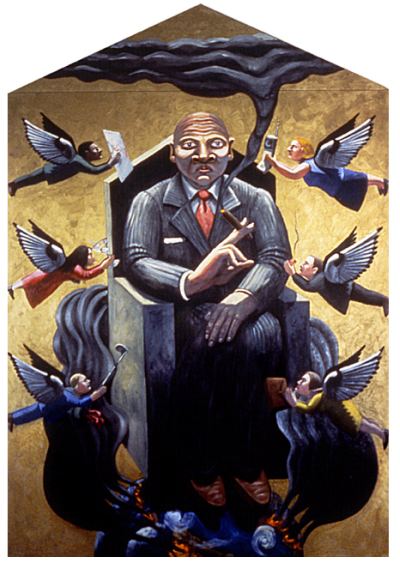 For Emily Duffy, the old bell is an alarm. In Constitutional Doublecross, she laments the blurring of the line between church and state. (Via Sandra)
For Emily Duffy, the old bell is an alarm. In Constitutional Doublecross, she laments the blurring of the line between church and state. (Via Sandra)
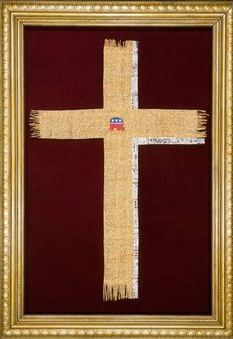 As befits the iconography, the fallen continue to fall. (Maurizio Cattelan)
As befits the iconography, the fallen continue to fall. (Maurizio Cattelan)
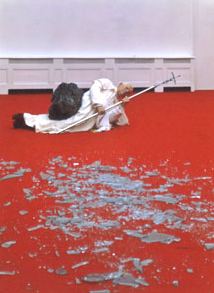 Faulkner:
Faulkner:
The past is never dead. It’s not even past.



A gift from a nonChristian (me):
Emily Duffy’s piece “Constitutional Doublecross”
on this link:
emilyduffyart.blogspot.com
Click on the piece. Was in a show last Fall.
(Women sculptors support each other.)(I don’t know Emily Duffy personally.)
Let this chalice pass from me. I’ll stick to art that has nothing to do with this old fraud.
None of this seems very “unintentional”. I’d be interested in the unconscious expression of
Christianity as it appears in an artist’s work.
Hi Hugh. I think the content in all these examples is clear, but when it is unacknowledged by the artist or even denied, I think of it as unintentional.